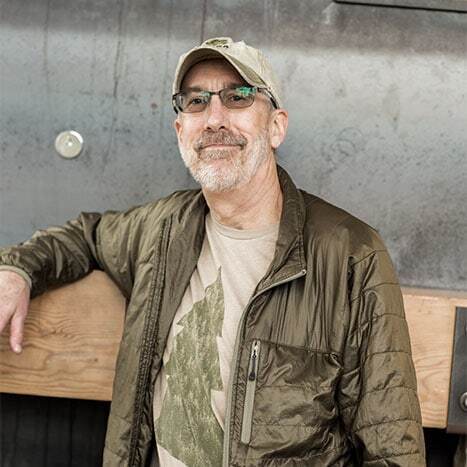There are ten essentials to bring on every backcountry trip, but whatever else you decide to pack, don’t skimp on a good, reliable stove. With one, you can whip up a warm meal to revive you and your buddies after a long day of climbing or make hot drinks to boost morale after a dispiriting day slogging through the rain.
Stove design has undergone a revolution in the last 25 years. Backpacking stoves today are lighter, faster, more compact and more reliable than ever. The biggest challenge is picking the right one for you.
Below, REI staff share their favorite stoves for a variety of preferences and budgets, along with why we love them.
At the bottom of this article, we walk you through some things to consider when choosing a backpacking stove.The first decision to narrow down your search is what fuel source you prefer. Isobutane/propane canister stoves rule the market these days, largely because they’re so convenient. But other types of stoves such as alcohol stoves or liquid-fuel stoves also can be worthy cooking companions, depending on your circumstances—for instance, if you’re at a very high altitude, or are going ultralight. There are options to fit multiple budgets and gear preferences.
Staff Picks
Find quick recommendations below or scroll down for in-depth reviews.
- Best Overall Backpacking Stove: Jetboil Flash 1.0 L Fast Boil System
- Best Backpacking Stove in Windy Conditions: MSR WindBurner System
- Best Backpacking Stove for Solo Backpackers: Jetboil Zip 0.8 L Fast Boil System
- Best Backpacking Stove on a Budget: MSR PocketRocket 2 Stove
- Best Liquid-Fuel Stove: MSR WhisperLite International Stove
- Best Alcohol Backpacking Stove: TOAKS Titanium Siphon Alcohol Stove
- Best Wood-Fuel Backpacking Stove: TOAKS Titanium Backpacking Wood Burning Stove - Small
Canister Stoves
Best Overall Backpacking Stove
Jetboil Flash 1.0 L Fast Boil System
Stove type Canister
Fuel burned Isobutane-propane
Average boil time (1 L) 4 min.
Dimensions 4.3 x 7.3 in.
Weight 13.1 oz.
With the Flash, Jetboil didn’t needlessly reinvent a technology that works incredibly well. Instead, the brand made several welcome refinements that tighten the screws on its already-proven system.
The most obvious change is a new ignition system that replaces the piezo igniter, the press-to-ignite button common on backpacking stoves. “My previous Jetboil worked like a charm in so many backpacking situations, but the igniter was tricky; I always had to carry a lighter because it was so inconsistent,” says Expert Advice Managing Editor Phuong Le. Jetboil finally fixed the glitch by adding a turn-click ignition that resembles the dial you’d find on your home stove.
That’s not the only upgrade. The Flash now boasts an improved connection between the stove’s burner and the system’s removable pot, which protects the flame from wind and helps the stove heat efficiently. Three locking connection points secure the link, and visual indicators show when the pot is properly seated.
Finally, Jetboil users at one time or another might have wished they had Teflon fingertips to touch the scalding stove, which can permeate even through its insulating cozy. With the Flash 1.0, the company added a colorful grip zone for extra protection and better handling.
Along with these latest additions users will find the same convenient features they’ve come to expect from a Jetboil: The components fit nicely within the pot for compact storage. The bottom cover doubles as a measuring cup. And, of course, Jetboil’s trademark wicked-fast heating makes two 8-oz. cups of coffee in two minutes. Buy here.
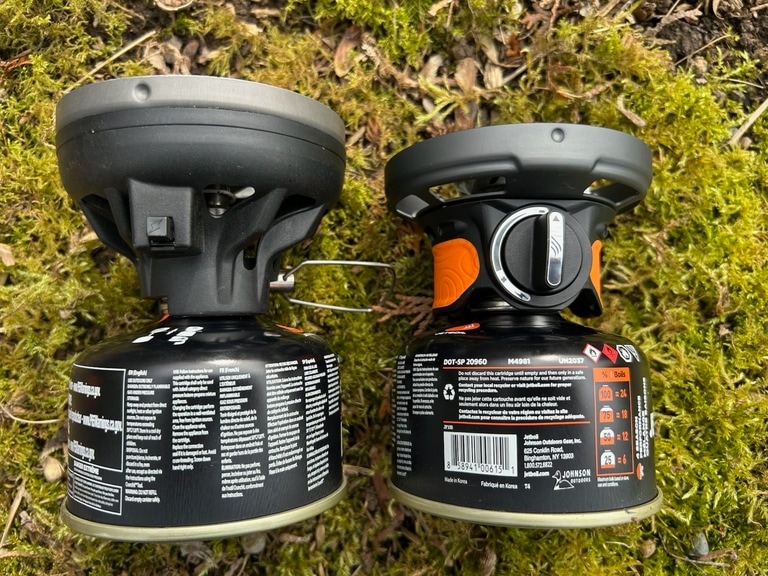
Best Backpacking Stove in Windy Conditions
MSR WindBurner Stove System
Stove type Canister
Fuel burned Isobutane/propane
Average boil time (1 liter) 4 min. 30 sec.
Burn time (maximum flame) 95 min. (8 oz. canister)
Dimensions 8.3 x 8.3 x 4.5 in.
Weight 15.5 oz.
Stove specs are scrutinized in a controlled test environment, which is too bad because most of us will never prepare our freeze-dried entrées in a laboratory. And, unfortunately, a lot of speed burners in the lab don't fare so well on windswept mountain passes and gusty shorelines. Backpacking expert Jenny Askey of REI Co-op's Boulder, Colo., store, puts it this way: "Even a wind of 5 to 10 mph can really affect the efficiency of your stove if it's not screened properly."
Enter the MSR WindBurner, which is engineered to retain its cooking mojo in blustery conditions. MSR started by integrating the burner and cookpot in a stove system (like the Jetboil MiniMo and Jetboil Zip), then took it further by encircling the radiant burner inside a windshield ring to block breezes from all directions. A heat exchanger (which retains heat that would otherwise dissipate) and a pressure regulator (which maintains a consistent fuel pressure in the burner) further enhance cooking efficiency, even when outside temperatures drop and the canister's fuel level gets low. So just how wind-hardy is the WindBurner? Askey offers up this tale from a recent trip in the Rockies where gusts reached 50 mph: "We had a guy on that trip who used his WindBurner, and he had zero problems."
The WindBurner's 1-liter pot features many of the same touches you find with other stove systems: an insulating cozy and a lid that lets you sip out of one side or strain fluids out of the other. MSR also makes a wide range of additional cookpot sizes and styles that can integrate with the WindBurner. Buy here.
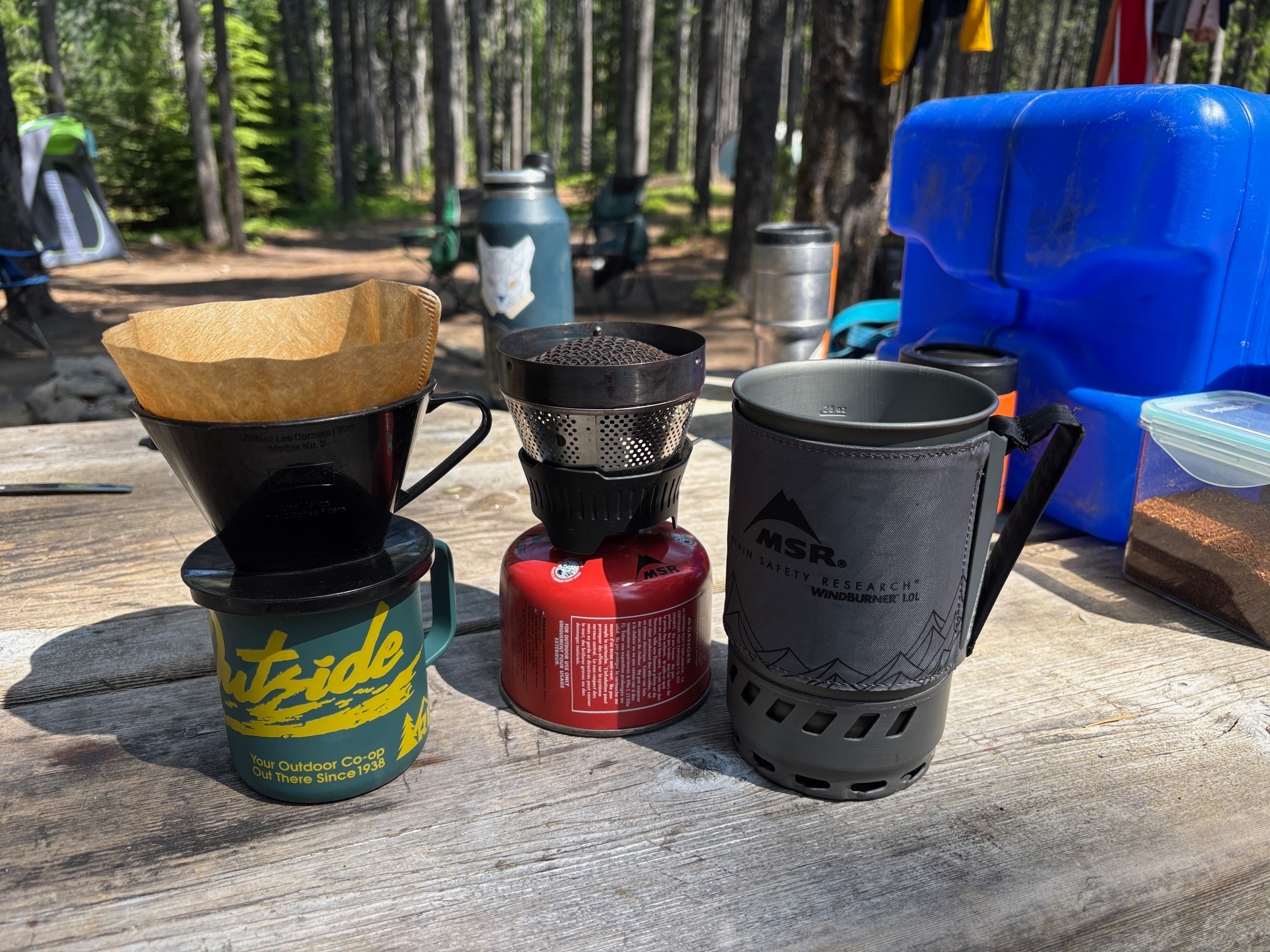
Best Backpacking Stove for Solo Backpackers
Jetboil Zip 0.8 L Fast Boil System
Stove type Canister
Fuel burned Isobutane-propane
Average boil time (1 L) 2 min.
Dimensions 4.3 x 6.5 in.
Weight 11.4 oz.
If you’re looking for a lightweight ripper of a stove that lets you shave ounces without sacrificing performance, grab the Zip 0.8 L for your next quick mission or solo outing. The right balance of portability, efficiency and convenience, the Zip 0.8 L is the flame-thrower that Jetboil users have come to expect: capable of boiling one liter of water in a remarkable two minutes, but in a slightly more pared-down package than the Flash 1.0.
That doesn’t mean the Zip lacks refinements. Jetboil added a textured grip zone easy handling of the stove base. The Zip also sports a dial to better regulate its flame. Designers at the brand have also improved the pot-to-burner connection on this and other models: Three locking points now ensure that the pot stays seated to the stove base, and visual indicators provide extra peace of mind that the connection is secure.
Other winning Jetboil attributes are present: All of the components nest neatly inside the cooking pot, which keeps everything organized and compact in your pack. And the stove’s bottom cover doubles as both a measuring cup and a bowl.
To keep both the weight and the cost lower, the cooking pot on the Zip 0.8 L is slightly smaller than on its sister model, the Flash 1.0 (.8 liters versus 1 liter). And unlike the Flash 1.0, there’s no built-in igniter on this model—so don’t forget your Bic, unless you like cold oatmeal. Buy here.
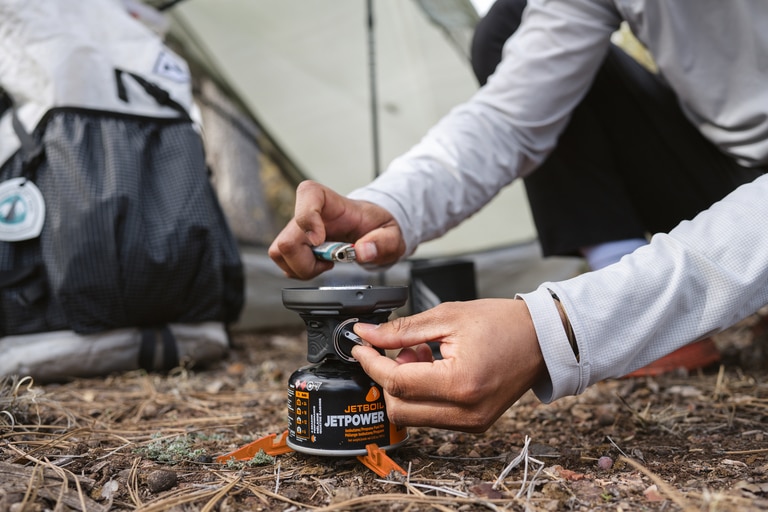
Best Backpacking Stove on a Budget
MSR PocketRocket 2 Stove
Stove type Canister
Fuel burned Isobutane-propane
Average boil time (1 L) 3 min. 30 sec.
Dimensions 3.1 x 1.7 in.
Weight 2.6 oz.
For folks who just want to boil some water in the backcountry, this is your rig. "It's almost everyone's first backpacking stove," says Tim Bird in REI Co-op's Framingham, Utah, store, who still has his original MSR PocketRocket, along with a few updated versions he's gotten over the years. The venerable stove is simple, reliable, lightweight and affordable—what's not to love?
The PocketRocket 2 is also a triumph of minimalist design: just a burner with a flip-out wire control key and fold-out pot supports. The time from popping open its micro case to full-throated burner roar is quick, as is the cooking speed: It has the fastest boil time of any stove on this list. One reviewer says: "I actually think it's far and away the best of its kind. Packs small and light, takes less than a minute to set up and turn on and boils a few cups of water within two to three minutes."
At just 2.6 ounces, the PocketRocket 2 is a shade lighter than its predecessor. It's also slightly more compact. Even the cookware support is improved. A few users of past PocketRockets had complained that its pot supports were a little rickety. (We've knocked over a pot of boiling pasta at least one due to user carelessness). The ones on this model are a more secure thanks to an updated support bolt that provides better tension. Serrated pot-support edges also contribute to creating a secure cookware perch atop the stove. Buy here.
Related MSR models: The MSR PocketRocket Deluxe gives you a push-button piezo igniter and a pressure regulator that maintains a consistent cooking performance in cold temperatures and when the canister is getting low on fuel. With those upgrades, the Deluxe weighs 0.3 ounces more (2.9 oz.) than the PocketRocket 2.
Non-Canister Stoves
Best Liquid-Fuel Stove
MSR WhisperLite International Stove
Stove type Liquid fuel
Fuels burned White gas, auto gas, kerosene
Average boil time (1 L) 3 min. 30 sec. (white gas)
Dimensions 6.5 x 5 x 4 in.
Weight 11.2 oz. (stove and pump)
Talk to any guide or longtime REI employee and chances are they have at least one WhisperLite stove in their gear closet. Staffer Ingrid Johnson's white-gas version of the MSR icon is still going strong: "Classic. It was my first stove; I got it after high school graduation in '97. I've replaced one part and cleaned it out once since then. It's still cruising. It was my only stove for nearly 20 years and I still bring it anytime it's going to be sub-freezing." Since you pressurize the fuel bottle with a pump, colder temps won't make it sputter or fail like a canister stove that loses fuel pressure as the temperature of its fuel drops.
Another benefit of a stove like the MSR WhisperLite that relies on white gas is in the economics. White gas, which you can buy at most sporting goods stores, tends to cost less per ounce than isobutane/propane. That makes it a great option for both group trips and winter trips where you may be burning through a ton of fuel every day, Johnson points out. (Downsides: Liquid-fuel stoves tend to be heavier than isobutane/propane canister stoves, and can also be sooty—especially if you burn kerosene.)
Those are the primary hallmarks of the regular WhisperLite, and the International improves upon the winning design by adding multifuel capability. Being able to run on white gas, auto gas or kerosene makes this iteration versatile enough for major trips abroad where fuel options can differ from those in the U.S. And if you saved "buying fuel" for the drive to the trailhead, you're much likelier to find a suitable option at a gas station or grocery store along the way. Staffer Geoff Irons, from the REI Colorado Springs, Colo., store, remembers a time when having that multifuel capability saved a trip that took him merely across the country. "We'd driven from the East Coast to Colorado and planned to get fuel at the mountain shop in the town near our trailhead. The store was closed, though, so we walked across the street and filled up at the town gas station." Buy here.
Related MSR models: The MSR WhisperLite Universal gives you even more fuel versatility because it burns the same range of liquid fuels as the WhisperLite International while also working with isobutane/propane fuel canisters.
Best Alcohol Backpacking Stove
TOAKS Titanium Siphon Alcohol Stove
Stove type Liquid fuel
Fuel burned Alcohol
Average boil time (1 L) 11 min.
Dimensions 2.13 x 1.5 in.
Weight 0.7 oz.
Alcohol stoves have a niche following, primarily among ultralighters and thru hikers who are drawn to the miniature contraptions like moths to a flame. Our pick in this category, the TOAKS Titanium Siphon, is just a wee dram more than half an ounce. (Imbiber's note: The stove will not run very long on scotch or whisky.)
The other allure of an alcohol stove is that it's a relatively inexpensive setup. (A classic gear hack is to make your own alcohol stove from a soda can.) The denatured alcohol fuel required is also one of the cheaper fuels you can buy. Thus, it might be said that paying $35 for an alcohol stove, even a featherweight titanium one, is violating the spirit of the thing. But staffer Tim Bird makes the case this way: "This TOAKS stove is precision-machined to burn as efficiently as possible." Cooking efficiency is one thing all alcohol stoves lack, so there's definite value in having one that's more fully engineered. The Siphon features double-wall construction, which channels vaporized steam up through those double walls to boost cooking performance. Its cooking speed—11 minutes to boil a liter of water—is still slowest in our roundup.
Another caveat is that alcohol stoves lack burner control—to turn it on, you light it, to turn it off, you blow it out. Having an open flame also means that alcohol stoves might be banned in some areas at certain times of the year because of wildfire regulations.
Customer reviewers are big fans of the TOAKS Titanium Siphon. One sums it up this way: "This is by far my favorite alcohol stove. It is so simple, with no extra parts; it couldn't be easier to use. It boils water efficiently, and it's even easy to pour any excess alcohol back into a storage bottle without spilling it." Buy here.
Best Wood-Fuel Backpacking Stove
TOAKS Titanium Backpacking Wood Burning Stove - Small
Stove type Wood
Fuel burned Wood
Dimensions 3.75 x 7.25 in.
Weight 5.4 oz.
Wood-burning backcountry stoves, like alcohol burners, have a passionate following. They can burn pinecones, dry leaves and twigs, freeing the user from having to pack fuel and fuel canisters—or deal with empties. No other type of stove offers these distinct advantages. The stoves are also very light, weighs in at a bantam sub-6 oz. And there’s something primal about huddling beside an open flame, outdoors.
This thoughtfully designed backpacker's version of a larger TOAKS stove, consists of three parts that stack into each other for clean storage when not in use. Feed twigs into the base; the stove’s design encourages repeated combustion for high efficiency.
There are cons to using a wood-burning backpacking stove. Finding fuel that is the right size, and dry, may be a challenge. " Unlike gas stoves, wood stoves need a bit more of your attention to keep things burning their hottest,” notes one customer-reviewer. And users report that it can take about 15 minutes to boil one liter of water. Finally, the small stove can be a little tippy, which is why some prefer to stake it down before use. The upshot: More than with other stoves, practice makes perfect with this one. But once you nail it, the TOAKS delivers.
Note: Backcountry regulations might forbid the use of a woodburning stove in areas where wood sources are scarce or because of wildfire danger. Before you head out with plans to use a wood-fed stove, check regulations for any fire bans or restrictions on wood collection or open flames. Buy here.
Buying Advice for Backpacking Stoves
Backpacking stove choice begins with fuel choice because a stove's design revolves around the characteristics of its fuel source. We cover a few considerations relating to a stove's fuel type in the reviews above. For a more thorough primer on the subject, read How to Choose the Right Backpacking Stove Fuel.
Stove Choice Based on Fuel Source
Below are pros and cons to help you decide which fuel (and related stove options) you might prefer.
Canister-fuel stove: This cooker attaches to a prefilled/sealed fuel canister containing a pressurized blend of isobutane and propane. The stoves like this in our roundup are the Flash 1.0 L Fast Boil System, MSR WindBurner System, Jetboil Zip 0.8 L Fast Boil System and MSR PocketRocket 2.
Pros
- Easy to ignite (no priming required)
- Excellent flame control
- The most popular type of stove, so you have more options
Cons
- Harder to ignite in cold temps and at high altitude
- When fuel gets low, performance lags. (Note: Canister stoves with pressure regulators like the Jetboil MiniMo System and MSR WindBurner System overcome this issue.)
- You often have to take one extra canister to ensure you don't run out of fuel.
- Canisters cannot be reused; recycling them is possible, but not universal.
Liquid-fuel stove: This cooker attaches to a refillable fuel bottle. Most of these stoves run on white gas, though a few also run on kerosene, unleaded auto gas or other options. The liquid-fuel stove in our list is the MSR WhisperLite International.
Pros
- Maintains full performance in cold weather and at high altitude.
- Fuel is widely available; multi-fuel models make finding fuel abroad easier.
- Can take exactly as much fuel as you want
- No canister waste (larger fuel cans are still an issue)
Cons
- Priming is required each time you fire up.
- Heavier than canister stoves
- More expensive than canister stoves
Alcohol-fuel stove: This cooker runs on denatured alcohol that you pour directly into the stove and ignite. The alcohol-fuel stove we recommend is the TOAKS Titanium Siphon.
Pros
- The most ultralight stove type
- The most affordable stove option
- Can take exactly as much fuel as you want
- No canister waste (larger fuel cans are still an issue)
Cons
- Boiling times are far slower than with canister stoves and other liquid-fuel stoves.
- Not suited to below-freezing temperatures
- No flame control, so you can't prepare items that need to simmer
- At certain times, some areas prohibit open-flame stoves for fire-safety reasons.
Wood-fuel stove: This cooker runs on gathered leaves, twigs and pinecones. The wood-fuel stove in our guide is the TOAKS Titanium Backpacking Wood Burning Stove – Small.
Pros
- No added fuel required, reducing operating cost and pack weight
- No canister waste, nor fuel container disposal issues
Cons
- Finding good fuel sources can be a challenge, and adds to cooking chores.
- A few backcountry areas prohibit wood-stove use to prevent impacts of fuel gathering.
- Relatively slow boiling times
- No flame control, so you can't prepare items that need to simmer
- At certain times, some areas prohibit open-flame stoves for fire-safety reasons.
Solid-fuel stove: One niche category we don't review in this article is stoves that run on separately purchased fuel tablets. Not a lot of solid-fuel stoves are available, but options like the Esbit Pocket Stove can be an ultralight and affordable option if you only need to boil water.
Understanding Stove Specs
Stove specs can easily mislead you, so it's important to understand some ways that can happen. For starters, manufacturers don't always report specs consistently. Tests are also done in a windless lab environment and all stoves, even wind-resistant models, don't perform as well in real-world (i.e., breezy) conditions. Below, we'll talk about a few specs and considerations when you use them for comparison.
Average boil time: One brand might state the time it takes to bring 0.5 liter of water to a boil, while another might state it for a full liter of water. REI.com converts times to standard 1.0 liter of water. (If you source specs from different websites, make sure you convert to the same units.) Note, too, that a wood stove's field boiling time will vary on each trip because the fuel source you gather will vary.
Burn time (max. flame): When comparing this spec, be sure the fuel type and amount are the same. To get an idea of a stove's efficiency, consider this spec together with the average boil times. If, for example, two stoves burn for 60 minutes on the same size canister, but one boils water more rapidly, the faster boiler will be the more efficient consumer of fuel.
Note: Comparative burn time specs are only useful if you burn a relatively uniform amount of fuel. Because a wood stove will burn as long as you keep feeding it, wood stoves omit the spec. Alcohol-stove makers could probably work out a way to calculate the spec, but none do.
Weight: On most stoves, this spec does not include the weight of the fuel canister nor liquid fuel and the bottle that holds that fuel. The smallest canister sizes add about 8 ounces, while the smallest filled liquid-fuel bottle will add about 11 ounces to your pack. On canister stove systems, the weight of the cookpot is typically included in the spec, which skews comparisons between system and standalone canister stoves.
Calculating fuel needs: Because the weight and bulk of your stove's fuel supply are also important considerations, you might also want to read How Much Stove Fuel Do I Need for a Backpacking Trip?.
Worthy Stove Features
Canister stove systems: These include a tall cookpot that connects directly to the stove and creates a solid, somewhat wind-protected unit. The cookpot often has a lid for drinking or straining, an insulated cozy and a built-in handle. Typically, all system components, plus a small fuel canister, will fit inside the pot for packing. System stoves are efficient and convenient, though you will be limited to cooking with the cookpot in that system, or to that brand's cookware that's compatible with your system.
Piezo igniter: This push-button system sends a spark into the burner to light the stove—no matches required. Piezo igniters are incredibly convenient, but detractors claim that they will inevitably wear out. So you should always pack a lighter or matches as a backup (or plan to raid—and later replenish—the matches or lighter in your Ten Essentials stash).
Pressure regulator: The knock on canister stoves has always been they don't perform well in below-freezing temps, and that their performance degrades as fuel in the canister gets low. Both of those circumstances lower the fuel pressure a canister can deliver to the burner, which impairs heat output.
Canister stoves that have pressure regulators (not all do) negate those issues. This precisely engineered component monitors pressure coming from the fuel canister and adjusts its outflow to ensure a consistent pressure gets delivered to the stove's burner. The result is that pressure-regulated canister stove will be on more equal footing with a liquid-fuel stove in most conditions, though there are limits to the magic: When temps drop into the teens, a liquid-fuel stove is the way to go.
Methodology
We relied heavily on the most seasoned frontline REI store staff for the recommendations in this staff picks guide. These folks have seen a lot of innovation in stoves over the years and are good at discerning gimmicky contenders from solid performers. We also turned to our customer reviewers, who also had a substantial say in these picks.
Editor’s Note: We updated this gear guide on April 15, 2025, to add three new products: the latest Jetboil Flash 1.0, the Jetboil Zip .8 and the Toaks Titanium Wood-Burning Backpacking Stove. We also refreshed the intro and slightly revised buying advice to add new products.
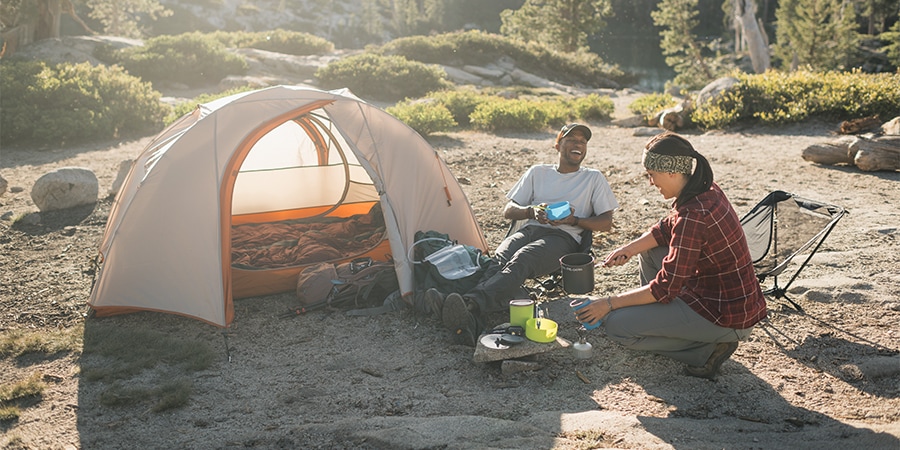
![Flash 1.0 L Fast Boil System [Fuel canister not included]](/media/9686371a-4647-401e-b2ea-c14b4f492042/?size=440)
![Flash 1.0 L Fast Boil System [Fuel canister not included]](/media/b0a203d5-35ac-4be2-8b3d-a377a093f229/?size=440)

![WindBurner Stove System [ ]](/media/1f849c2e-3734-4078-a647-f1816f0132a2/?size=440)




![Zip 0.8 L Fast Boil System [Fuel canister not included]](/media/48ac1a65-b7f7-4d8d-ba77-d59b8859524b/?size=440)
![Zip 0.8 L Fast Boil System [Fuel canister not included]](/media/baac0b68-ea62-4aed-a03b-a82a85eead35/?size=440)


![PocketRocket 2 Stove [Fuel canister not included]](/media/7746a739-615e-44e9-a99c-3eaebd8b3116/?size=440)



![WhisperLite International Stove [Fuel bottle not included]](/media/180ddf1a-1441-4091-8c62-d0cc1f702b8c/?size=440)
![WhisperLite International Stove [Fuel bottle not included]](/media/aaa8440a-0885-4d8e-892d-b567ecdccf18/?size=440)







